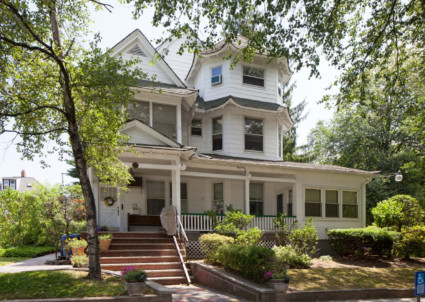Houses of the Wedge
84-37 113th Street c. 1900
84-11 112th Street c. 1900
The full range of Richmond Hill’s architectural styles is on display in the triangle-shaped wedge of residential blocks between Myrtle Avenue and the former South Side Railroad line (elevated above Bessemer and Babbage Streets since 1924). Most of neighborhood’s houses date to the period of Academic Eclecticism in architecture. Many use highly irregular massing—often including corner turrets, projecting bay windows and complex rooflines—enabled by new technologies and building techniques. The use of applied ornament also reflects the increasing industrialization of the building trades. As factories began mass production of architectural components such as doors, windows, siding and decorative detailing, domestic architectural styles became much more flamboyant. Nominally based on medieval European precedents, these “Victorian” architectural styles were in fact a loose interpretation of both medieval and Classical models, and architects frequently mixed and matched elements in highly individualized components. One of the most individual houses is the unusual Japanese-inspired design at 84-37 113th Street. Some of Richmond Hill’s houses reflect post-Victorian architectural styles, which were more formal and rigorous in their use of historic precedents. Perhaps the most popular of these styles was the Colonial Revival, which favored symmetrical house forms more clearly. An impressive example of this style is found at 84-11 112th Street.

